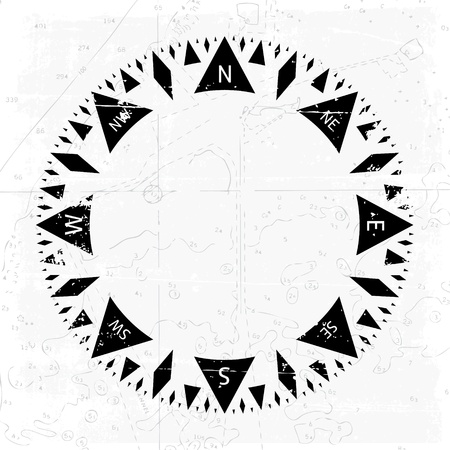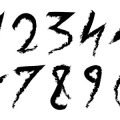Introduction to Pendulum Divination
Pendulum divination, often referred to as dowsing or radiesthesia within the British Isles, is a spiritual and folk practice that harnesses the movement of a suspended weighted object—a pendulum—to seek answers and guidance. Rooted in both mystical tradition and practical folk customs, this technique involves asking questions and interpreting the subtle movements of the pendulum as responses from the subconscious mind or from spiritual entities. The fundamental principle underpinning pendulum divination is the belief that energy fields, intuition, or unseen forces can influence the motion of the pendulum, providing insight into matters ranging from personal dilemmas to locating lost objects. Traditionally, pendulum divination has served a dual purpose: it is employed not only for spiritual exploration and communication but also as a pragmatic tool within rural communities for tasks such as water dowsing or detecting hidden resources. As such, pendulum divination occupies a distinctive place in the cultural tapestry of the British Isles, bridging the realms of folklore, spirituality, and everyday problem-solving.
2. Early Evidence and Ancient Roots
A systematic exploration of pendulum divination in the British Isles requires a careful evaluation of both archaeological artefacts and early textual references. While direct evidence of pendulum tools from prehistoric Britain is sparse, there are several artefacts and cultural practices that suggest the conceptual foundations for pendulum-like divination were present among ancient Britons.
Archaeological Evidence: Pendulum-Like Objects
Excavations across the British Isles have unearthed objects that, while not explicitly labelled as divinatory pendulums, bear resemblance to simple weights suspended by cord or thread. These may have been used in rituals or as tools for other forms of dowsing and divination. The table below summarises key artefacts and their possible connections:
| Site/Region | Date | Description | Plausible Divinatory Use |
|---|---|---|---|
| Stonehenge Area | Neolithic (ca. 2500 BCE) | Small perforated stones with signs of suspension | Ritual movement tracking; possible use as proto-pendulums |
| Orkney Islands | Bronze Age (ca. 2000-800 BCE) | Pendants and beads with wear patterns from string attachment | Likely ritual jewellery; speculative use in divination ceremonies |
| Celtic Hillforts (Wales) | Iron Age (ca. 800 BCE–100 CE) | Metal weights, sometimes inscribed or decorated | Pendulum-like tools for decision-making or omen-seeking |
Druidic Rituals and Early Textual References
The Druids, priestly figures of Celtic Britain, are often associated with esoteric knowledge and nature-based rituals. Classical writers such as Julius Caesar and Pliny the Elder described Druidic ceremonies involving sacred groves, the casting of lots, and augury. Although explicit mentions of pendulum divination are absent, some scholars argue that descriptions of suspended objects used to read omens indicate an embryonic form of pendulum practice.
Early Folk Traditions and Oral Transmission
Beyond elite Druidic circles, folk traditions across rural Britain preserved forms of sympathetic magic and dowsing—both conceptually related to later pendulum techniques. Oral histories from Cornwall, Wales, and Scotland speak of using weighted cords or stones to seek lost objects or answer questions about health and fortune, suggesting continuity between ancient customs and later pendulum divination.
Synthesis: Roots of Pendulum Divination in Prehistoric Britain
The cumulative archaeological and textual record points towards a gradual evolution. While definitive proof of prehistoric pendulums remains elusive, the interplay between ritual objects, Druidic practices, and enduring folk customs laid the groundwork for the emergence of pendulum divination in the British Isles.

3. Medieval and Renaissance Developments
The medieval and Renaissance periods in the British Isles marked a significant evolution in the practice of pendulum divination. As monastic scholarship flourished and the boundaries between science, religion, and folk tradition became more pronounced, pendulums began to find nuanced roles within society.
Pendulum Divination and Dowsing Practices
During these centuries, dowsing—most commonly associated with the search for water or minerals using rods or pendulums—gained both popularity and notoriety. Records from rural communities in England and Wales describe the use of weighted objects suspended from string to divine hidden sources beneath the earth. This method, sometimes called “water witching,” was adapted from older rod-based techniques but became more refined with the use of a pendulum for increased sensitivity.
Monastic Records and Scholarly Observations
Within monastic settings, pendulum divination was subject to cautious documentation. Some Benedictine and Cistercian records mention laypeople seeking guidance from monks regarding divinatory practices. While official Church doctrine often condemned such methods as superstitious or heretical, certain scholars—including Roger Bacon—acknowledged that natural phenomena could be worthy of study if approached rationally. Manuscripts from this era show evidence that pendulums were considered tools for both physical exploration (such as dowsing) and spiritual inquiry.
Interplay with Contemporary Religious Beliefs
The interplay between religious orthodoxy and folk belief created a complex environment for the use of pendulums. On one hand, ecclesiastical authorities viewed divination as potentially blasphemous; on the other, local customs persisted, especially in remote regions where church oversight was limited. The tension is evident in contemporary court records and ecclesiastical decrees, which alternately punish or ignore practitioners depending on context. Notably, some sympathetic clergy framed pendulum use as a form of “natural magic,” thereby partially legitimising it when performed with pious intent rather than for personal gain.
In summary, the medieval and Renaissance periods saw pendulum divination evolve alongside changing attitudes towards science, faith, and folk tradition in the British Isles. The practice maintained its foothold through adaptation—shifting from purely mystical origins towards applications in early natural philosophy and rural problem-solving.
4. Integration into British Folk Traditions
Pendulum divination, although rooted in older European mystical practices, became deeply intertwined with the fabric of British folk traditions over time. This integration was not merely superficial; instead, pendulum dowsing adapted to the rhythms of daily life and beliefs within the British Isles. Its adoption can be systematically examined through its roles in village life, healing rituals, and practical problem-solving such as finding lost objects or seeking answers to local mysteries.
Village Life and Community Practices
In rural Britain, especially from the 18th century onwards, pendulum divination found a place alongside established forms of folk magic and customary law. Local wise women, cunning folk, and even some clergymen occasionally used pendulums during community gatherings or private consultations. The pendulum’s perceived ability to access hidden knowledge made it an asset for resolving disputes, selecting auspicious dates for planting, or predicting weather patterns crucial to agrarian life.
Healing and Health
The application of pendulum divination in health-related matters reflected both practical needs and magical thinking. Folk healers often employed the pendulum to diagnose ailments believed to have spiritual or energetic origins. This method typically complemented herbal remedies or charms rather than replacing them. The following table outlines some common uses:
| Purpose | Description | Typical Practitioners |
|---|---|---|
| Diagnosis | Pendulum swung over the body to detect sources of illness or imbalance | Wise women, herbalists |
| Cure Selection | Pendulum used to choose between remedies (herbs, prayers, rituals) | Cunning folk |
| Energy Clearing | Pendulum employed to “cleanse” negative energies or spirits from individuals/homes | Folk healers |
Searching for Hidden Objects and Answers
Pendulum dowsing also gained popularity as a tool for finding lost items—ranging from livestock to family heirlooms. In many communities, this practice was so ingrained that specific individuals developed reputations as skilled “seekers.” Beyond material searches, villagers sometimes posed personal or communal questions to the pendulum during times of uncertainty, treating its responses with a blend of scepticism and hope typical of British pragmatism.
Case Examples: Everyday Applications
- Lost Livestock: Farmers would request help locating missing sheep or cows by using a pendulum over a hand-drawn map.
- Finding Water: Before well-digging, villagers might consult a pendulum alongside traditional forked sticks to identify promising spots.
- Personal Guidance: Individuals uncertain about business ventures or relationships occasionally turned to the pendulum for decision-making support.
Synthesis: Cultural Adaptation and Resilience
The enduring presence of pendulum divination in British folk culture demonstrates its remarkable adaptability. Rather than remaining a foreign curiosity, it merged with pre-existing customs and filled practical gaps where empirical solutions were unavailable. This integration was facilitated by Britain’s longstanding tradition of blending rationality with ritual—a characteristic visible across numerous aspects of local heritage.
5. Victorian Revival and Occult Societies
The Victorian era in Britain, spanning from 1837 to 1901, marked a profound shift in attitudes towards the mystical and unexplained. This period witnessed an intense fascination with spiritualism, a movement that emerged as both a reaction to rapid scientific progress and as a pursuit of answers beyond material reality. The pendulum, previously regarded as a mere curiosity or folk instrument, experienced a notable resurgence during this time.
The Rise of Spiritualism
Victorian society was captivated by séances, table-turning, and other forms of communicating with the spirit world. Within this cultural context, pendulum divination—often called “dowsing” or “crystal swinging”—became a popular parlour activity. Middle- and upper-class Britons would gather in drawing rooms to witness or attempt pendulum readings, seeking contact with spirits or answers to pressing questions. The practice was no longer restricted to rural cunning-folk; it entered the fashionable circles of urban London and provincial towns alike.
Pendulums in Parlour Games
The pendulum’s role evolved from that of a rural diagnostic tool to an instrument of entertainment and speculation. Pendulum games were devised where participants would ask questions ranging from romantic prospects to future fortunes. Sometimes these gatherings carried a light-hearted tone, while at other times they took on an air of earnest investigation into the unknown.
Adoption by Occult Societies
Beyond entertainment, the Victorian period also saw the emergence of formal occult societies. Foremost among these was The Hermetic Order of the Golden Dawn, founded in London in 1888. Members of such groups approached pendulum divination with scholarly rigour and ritualistic discipline. Manuals circulated describing specific pendulum techniques for communicating with astral entities or unlocking subconscious knowledge. In these circles, the pendulum became more than a game—it was a key symbol within broader systems of Western esotericism.
Cultural Legacy
The Victorian revival established pendulum divination as both a social amusement and a serious tool for occult enquiry. Its integration into British spiritualist culture set the stage for later developments in divinatory practices throughout the 20th century, ensuring its enduring presence in the British Isles’ mystical heritage.
6. Modern Practice and Contemporary Perspectives
Pendulum divination, once steeped in the folklore and mystical traditions of the British Isles, has undergone significant transformation in its modern-day practice and perception. While its historical roots are entwined with rural folk customs and spiritual inquiry, contemporary Britain witnesses a diverse array of attitudes towards this age-old art.
New Age Revivals and Popularity
Within the current New Age movement, pendulum divination enjoys renewed popularity. Many holistic shops across Britain stock crystal pendulums, while workshops and fairs frequently offer demonstrations and personal sessions. Practitioners often blend traditional methods with modern spirituality, using pendulums for energy work, chakra balancing, or dowsing for lost objects. Social media and online communities further facilitate the sharing of techniques and experiences, contributing to the mainstreaming of what was once an esoteric craft.
Scientific Critiques and Skepticism
Despite its visible presence in alternative circles, pendulum divination faces robust scrutiny from the scientific community. Researchers typically attribute its apparent effects to ideomotor responses—subtle unconscious muscle movements rather than supernatural forces. The British sceptical tradition, exemplified by organisations such as the Association for Skeptical Enquiry (ASKE), actively challenges the claims of divinatory accuracy and encourages public understanding of cognitive biases that may influence pendulum outcomes.
Cultural Endurance and Adaptation
Nevertheless, pendulum divination retains a unique cultural significance in Britain. Its enduring appeal lies not only in its mystical promise but also in its symbolic value—a bridge between ancient tradition and modern self-exploration. For some, it serves as a meditative tool; for others, it represents a connection to ancestral wisdom or local heritage. Community events, folklore festivals, and local museums occasionally feature pendulum dowsing as part of broader celebrations of British esoteric history.
Conclusion: A Living Tradition
Today, pendulum divination exists at the intersection of belief, scepticism, and cultural identity within the British Isles. Whether embraced as a spiritual tool or viewed as a curious relic of the past, its ongoing practice reflects Britain’s dynamic relationship with tradition, critical inquiry, and personal meaning-making.


